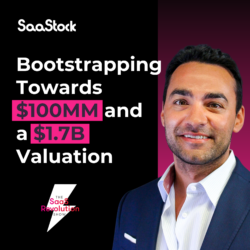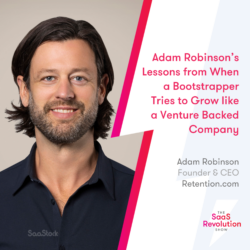In 2025, virtual events aren’t “nice-to-have” anymore — they are a primary way to build relationships, launch products, and create communities across industries. But expectations have evolved. Audiences today expect more than just a Zoom link and a few slides. They want real engagement, immersive experiences, and active participation.
The traditional one-way webinar no longer cuts it. In this new landscape, brands that treat virtual events as interactive ecosystems — not just broadcasts — are the ones who win attention, loyalty, and real business impact.
Why traditional webinars have stopped working
Five years ago, webinars were enough. People signed up for a slide deck and a Q&A session. Engagement expectations were low.
Today, attention spans are shorter, competition is fiercer, and audience standards are dramatically higher. When audiences experience TikTok, Twitch, VR spaces, and live interactive apps daily, sitting through a passive webinar feels like a step back in time.
Here’s why webinars are losing effectiveness:
- Passive consumption: Audiences want to shape experiences, not just watch them.
- Minimal connection: Static formats create no real sense of belonging or community.
- Low retention: Without real involvement, people mentally check out or leave midway.
- Content overload: In an era flooded with free information, content alone isn’t enough — experience matters.
In short, traditional webinars deliver information. Modern virtual events deliver connection.
What real engagement looks like in 2025 (and beyond)
“Real engagement” isn’t just about metrics like time spent or number of chats. It’s about making attendees feel emotionally, intellectually, and socially invested in the experience.
Let’s unpack how engagement manifests in 2025:
1. Two-way conversations, not one-way broadcasts
Attendees want opportunities to influence the session in real time: voting on discussion topics, submitting ideas that steer the agenda, or challenging speakers with live debates.
Example: At TechFuture 2025, keynote speakers allowed audiences to “vote in” surprise questions halfway through their talks. The audience reshaped 40% of the live session through real-time polling. Speakers who’ve taken motivational speaking classes often excel here — they’re trained to read the room, adapt their message on the fly, and energize engagement instead of lecturing.
Action tip:
Use live polling, rapid-fire Q&As, collaborative whiteboards (like Miro or FigJam) to invite real participation every 5–10 minutes.
2. Immersive, gamified environments
Platforms now offer much more than video windows. Participants can enter fully virtualized spaces: customizable avatars, breakout areas, scavenger hunts, all loaded with perfect photos and digital merch booths.
Example: At Adobe MAX, attendees navigated a virtual campus with art installations they could co-create — voting on features, colors, and designs in real time.
Action tip:
Choose event platforms that allow gamification modules: leaderboards, progress tracking, real-time challenges.
3. Personalized event journeys
Not everyone should experience your event the same way. Smart event platforms now offer content tracks personalized by attendee role, goal, or behavior.
Example: Salesforce’s Dreamforce allows attendees to build custom schedules based on industries, interests, and experience levels. New attendees got onboarding sessions; experts got deep-dives.
Action tip:
Offer dynamic agendas, session recommendations, and personal journey builders during registration and throughout the event.
4. Pre- and post-event community engagement
The best virtual events today begin weeks before the livestream and continue months after it ends.
Example: SaaStock 2024 opened a private Slack channel two months before the conference, organized pre-event AMAs, and fostered daily discussions. After the event, that community persisted with bonus webinars, exclusive networking sessions, and crowd-driven content creation.
Action tip:
Launch pre-event micro-communities (on Slack, Discord, or Circle.so) and nurture them long after the last session ends.
What tools and technologies power engaging virtual events today
In 2025, event organizers have a rich ecosystem of technologies designed for real interaction.
Essential tools:
- Spatial platforms: (e.g., Gather, Virbela) — Create “walking” virtual spaces with lounges, booths, and stages.
- Gamification engines: (e.g., Engamio, SocialPoint) — Add leaderboards, badges, scavenger hunts, trivia games.
- Polling and collaboration apps: (e.g., Slido, Mentimeter, Miro) — Real-time audience engagement.
- AI personalization layers: (e.g., Brella, Grip) — Match attendees, suggest sessions, dynamically recommend content.
- On-demand content hubs: Turn event recordings into Netflix-style libraries with tagging, bookmarking, and bingeable series.
Key trend:
AI “event co-pilots” are emerging — virtual assistants that suggest sessions, flag networking opportunities, and summarize key points for attendees in real time.
How to truly move past webinars: deeper strategies for 2025
If you want real engagement (not just attendance numbers), your virtual event strategy must be intentional at every step.
Here’s how:
1. Build participation into the design, not just the Q&A
Too many events bolt on engagement features like polls at the end. Wrong move.
Real engagement happens when the event is designed around two-way interaction from the start.
Framework:
- 7–10 min expert talk
- 3–5 min attendee polls/discussions
- 15 min co-created case study reviews
- 10 min audience-sourced next steps
Example: In a 2025 startup summit, speakers paused every 8 minutes to have the audience “unlock” the next insight by voting on their biggest challenge. Result: engagement rates tripled vs. past years.
2. Make networking natural, not awkward
“Here’s a random networking room” doesn’t cut it. People need guided connection points.
Strategies that work:
- Structured speed networking with conversation starters
- Industry- or interest-based breakout groups
- Mini-missions (e.g., “Find two people working in AI ethics and start a thread”)
Example:
At FutureWork 2025, “Curated Connection Sessions” matched participants based on job roles and business goals, resulting in 60% of attendees exchanging contact info before the event even ended.
3. Gamify smartly (not childishly)
Gamification works — if it’s done well. Slapping points and badges on basic actions feels shallow. Instead, tie participation to real outcomes:
Better gamification ideas:
- Collaborative challenges (e.g., build a marketing plan together involving email verification tactics)
- Unlock hidden sessions with activity
- Publicly recognize top contributors in final keynote shoutouts
Example:
A fintech summit awarded “Trailblazer” badges to attendees who collaborated across sessions. Winners received mentoring hours with top CEOs, making participation genuinely valuable.
4. Create multi-layered content experiences
Stop thinking “live session or bust.”
Great events now blend live, semi-live, and on-demand content smartly.
Content layering ideas:
- Pre-recorded expert interviews with live commentary/chat
- Bonus materials (worksheets, playbooks) sent during sessions
- Interactive workspaces (e.g., Miro boards) left open for async collaboration after sessions
Success stories: who’s already doing it right
- Notion’s Future of Work 2025:
Instead of traditional webinars, they created an event with build-along workshops, live office hours, and design challenges that attendees participated in on the spot. - WebSummit Remote:
They integrated Netflix-style personalization. Attendees got suggested session playlists, bingeable series, and “continue watching” prompts. - TechCrunch Disrupt Virtual:
Gamified startup pitch rooms with real-time scoring, judges’ hot takes streamed directly into attendee feeds, and audience-choice awards.
These companies didn’t just broadcast. They co-created.
That’s the model winning hearts (and wallets) today.
Myth busting: common misconceptions about modern virtual events
Even as virtual events evolve, outdated beliefs keep holding some organizers back. Let’s clear up a few major myths:
Myth 1: Virtual events must be short to avoid “Zoom fatigue”
Reality:
It’s not about length. It’s about design. People binge entire seasons of shows — fatigue happens when events are passive, not when they’re long.
If your event is interactive, multi-layered, and offers breathing space (breaks, flexible tracks, async participation), people will stay engaged for hours—or even days.
Myth 2: Gamification feels childish or gimmicky
Reality:
Badly implemented gamification feels childish. Good gamification—structured around professional growth, community status, or access to valuable experiences—increases real engagement and loyalty.
Smart gamification creates intrinsic motivation (“I want to contribute because it matters”), not just extrinsic motivation (“I want points”).
Myth 3: Only big brands with huge budgets can create immersive events
Reality:
Immersive doesn’t mean expensive VR sets and million-dollar platforms. It means thoughtful interaction design: small-group sessions, audience-shaped agendas, collaborative tools like Miro or Google Docs.
Smaller brands often win because they create more intimate, human-centered experiences—not by throwing money at tech, but by understanding what their community needs most.
The risks of clinging to old models
If you stick with traditional webinars in 2025, here’s what you risk:
- Lower attendance rates: Static events get buried under dynamic competitors.
- Poor engagement metrics: Minimal audience interaction leads to low ROI.
- Brand perception damage: Events that feel outdated make your company feel outdated.
- Community drift: Without interactivity, you lose your best audience advocates over time.
The opportunity cost is massive. Real engagement isn’t just a “nice” outcome. It directly fuels customer loyalty, advocacy, and future business.
Conclusion: build WITH your audience, not FOR them
The future of virtual events isn’t passive. It’s participatory, personalized, and community-driven.
If you want real engagement, the formula is simple (but hard):
- Invite attendees to shape the event with you.
- Design experiences where they feel seen, heard, and vital.
- Create a living environment where curiosity, creativity, and conversation thrive.
Stop treating virtual attendees like an audience.
Treat them like co-creators.
Because in 2025 and beyond, that’s what they expect — and what will keep them coming back.





